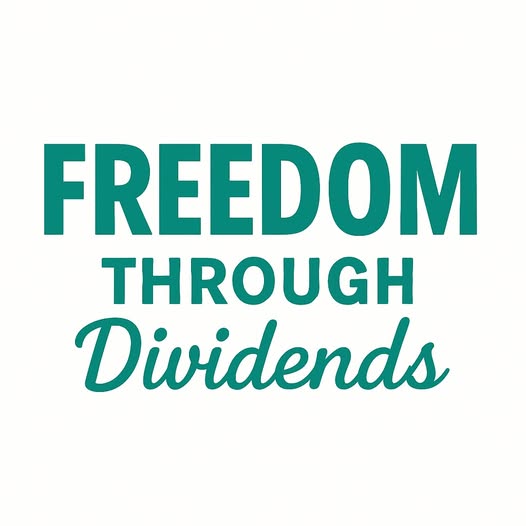Are you looking for a steady stream of income from your investments? Imagine getting regular dividend payments every week. This gives you a predictable income stream.
Investing in ETFs that offer weekly dividend payments is attractive for those wanting consistent returns. The right ETF investments can give you a regular income. This helps you reach your financial goals.
By choosing ETFs with a high ETF dividend yield, you can boost your returns. This creates a stable financial base. The key is finding the right ETFs for your income needs.
Key Takeaways
- Investing in ETFs can provide a regular income stream.
- ETFs with high dividend yields can maximize returns.
- Weekly dividend payments can help achieve financial goals.
- Identifying the right ETFs is crucial for success.
- A steady income stream can enhance financial stability.
Understanding Dividend ETFs and Their Benefits
For investors looking for regular income, understanding dividend ETFs is key. These funds offer a mix of stocks that pay dividends. This way, you can invest in many dividend-paying stocks with just one investment.
What Makes ETFs Attractive for Dividend Investors
ETFs are appealing because they spread out risk and are easy to trade. They let you invest in many assets at once, which lowers risk. Plus, you can buy and sell them like stocks, making it easy to adjust your portfolio.
The Advantage of Dividend ETFs Over Individual Stocks
ETFs offer a safer choice than investing in single stocks. They help protect against big swings in value. By choosing the best dividend ETFs, you get a share of many stocks’ dividends. This can make your returns more stable over time.
Also, ETFs make it simpler to manage dividend income. They handle the dividend payments for you. This makes it easier to keep track of your income.
How Weekly Dividend Payments from ETFs Work
Weekly dividend payments from ETFs come from a detailed process. The ETF gathers dividends from its securities, saves them, and then shares the income with investors every week.
The Mechanics Behind ETF Dividend Distributions
ETFs that offer weekly dividends hold a mix of stocks that pay dividends. They pool these dividends and share them with their investors. How often they do this depends on the ETF’s plan and the dividend schedules of its stocks.
Key factors influencing ETF dividend distributions include:
- The dividend yield of the underlying securities
- The ETF’s expense ratio and management fees
- The frequency of dividend payments from the underlying holdings
Dividend Payment Schedules and Frequencies
ETFs pay dividends at different times. Some pay weekly, others monthly or quarterly. By picking ETFs with different payment times, investors can get a steady income.
| ETF | Dividend Frequency | Typical Yield |
|---|---|---|
| WKLY | Weekly | 4% |
| TGIF | Weekly | 3.5% |
| SPYD | Monthly | 5% |
The table shows many ETF options for different dividend frequencies and yields. Knowing these schedules helps investors plan for a steady income.
“The key to a successful dividend investment strategy is not just about chasing high yields, but also about understanding the underlying mechanics and schedules of your investments.”
Creating a Weekly Dividend Calendar with Complementary ETFs

To get a steady weekly dividend income, investors can make a dividend calendar. They do this by picking complementary ETFs. This way, you spread out your income and don’t rely on just one payment schedule.
Staggering ETF Investments for Weekly Income
Staggering ETF investments means picking a mix of ETFs with different payment schedules. For example, you could choose ETFs that pay out weekly, monthly, or quarterly. This way, you get income every week. This strategy needs careful planning and watching to meet your financial goals.
To do this well, follow these steps:
- Find ETFs with different payment times.
- Look at the dividend yield and stability of each ETF.
- Spread out your investments to lower risk.
Tools for Tracking and Planning Dividend Schedules
Using the right tools is key for tracking and planning dividend schedules. Investors can use dividend calendars, spreadsheets, or financial apps to keep track of dividend payments. These tools help you stay on top of things and make smart choices about your ETFs.
Some top tools for tracking dividend schedules are:
- Dividend-focused financial websites and apps.
- Spreadsheet templates for tracking dividends.
- ETF provider websites with dividend calendars.
Top ETFs That Pay Dividends Weekly or Can Be Structured for Weekly Payments
Many investors look for ETFs that pay dividends weekly for a steady income. They can choose ETFs that pay dividends weekly or mix different payment schedules. This way, they get a regular income stream.
Weekly-Paying Dividend ETFs: WKLY, TGIF, and Alternatives
Some ETFs pay dividends weekly, perfect for those needing regular income. WKLY and TGIF are good examples. They offer frequent income, helping investors get a steady dividend flow.
Key Characteristics of Weekly-Paying ETFs:
- Frequent dividend distributions
- Structured to meet regular income needs
- Examples include WKLY and TGIF
When looking at these ETFs, check their dividend yield, expense ratio, and investment strategy. Make sure they match your financial goals.
| ETF | Dividend Yield | Expense Ratio |
|---|---|---|
| WKLY | 5.2% | 0.50% |
| TGIF | 4.8% | 0.60% |
Combining Monthly Dividend ETFs for Weekly Income
Investors can also get weekly income from monthly dividend ETFs. They just need to diversify across several ETFs with staggered payments. This means picking ETFs that pay dividends in different weeks of the month.
Benefits of Combining Monthly Dividend ETFs:
- Flexibility in creating a weekly income stream
- Diversification across different ETFs
- Potential for reduced reliance on a single ETF’s performance
By planning and monitoring your ETF portfolio well, you can get a steady weekly income. Even with monthly dividend ETFs.
High-Yield Dividend ETFs to Consider for Your Portfolio
Investors looking for steady income often choose high-yield dividend ETFs. These ETFs offer a regular income stream. They are great for those focusing on income.
Equity-Based High Dividend ETFs: SPYD, HDV, and SCHD
Equity-based high dividend ETFs invest in stocks with high yields. SPYD tracks the S&P 500 Dividend Aristocrats Index. It focuses on stocks with a history of consistent dividend payments.
HDV offers a diversified portfolio of high-dividend stocks. SCHD focuses on dividend growth stocks with stable payments.
These ETFs let you invest in many dividend-paying stocks. This can help reduce risk through diversification. When choosing, look at the ETF’s yield, expense ratio, and the index it tracks.
Fixed-Income ETFs with Attractive Yields: PFF, PCEF, and JEPI
Fixed-income ETFs are good for those wanting income with less volatility. PFF and PCEF focus on preferred stocks and closed-end funds. They offer higher yields than traditional fixed-income investments. JEPI combines income generation with options to boost yield.
These ETFs can give a steady income and lower volatility than stocks. But, check their credit quality, duration, and holdings. Make sure they fit your investment goals and risk level.
Sector-Specific ETFs with Strong Dividend Performance

Sector-specific ETFs let you focus on dividend-rich industries. This targeted approach can boost your income. It’s a smart way to diversify your investments.
Real Estate and REIT ETFs: VNQ, XLRE, and IYR
Real Estate Investment Trusts (REITs) and ETFs are favorites for dividend seekers. VNQ, XLRE, and IYR give you a slice of the real estate pie. They’re known for their high dividend yields, perfect for those looking for income.
| ETF | Dividend Yield | Sector Exposure |
|---|---|---|
| VNQ | 4.2% | Real Estate |
| XLRE | 3.8% | Real Estate |
| IYR | 4.0% | Real Estate |
Utility Sector ETFs: XLU, VPU, and IDU
Utility ETFs are great for dividend hunters. Utilities are known for steady cash flows and reliable dividends. XLU, VPU, and IDU give you a broad view of the utility sector. They’re a solid pick for those seeking steady income.
Financial Sector ETFs: XLF, VFH, and KBWB
Financial sector ETFs cover banks, insurance, and more. XLF, VFH, and KBWB are favorites for dividend income. They offer a mix of financial stocks, aiming for a steady income stream.
Building a Diversified Portfolio for Weekly Dividend Payments from ETFs
To get a steady flow of weekly dividends, you need a diverse ETF portfolio. This portfolio should match your investment goals. Diversifying helps reduce risk and increase returns, especially with dividend-paying ETFs.
Asset Allocation Strategies for Different Investment Goals
Asset allocation is vital for a diverse ETF portfolio. Your goals, risk level, and time frame guide your choices. For regular income, focus on top dividend paying ETFs. For growth, choose ETFs with more potential.
- Conservative investors might choose more fixed-income ETFs.
- Aggressive investors could go for equity-based ETFs with high growth.
- Income seekers might mix high-yield dividend ETFs with sector-specific ones.
Balancing Growth and Income in Your ETF Portfolio
It’s key to balance growth and income for a lasting strategy. Mix best dividend ETFs with those focused on growth. This could include both established dividend stocks and growth stocks.
- First, know your investment goals and risk level.
- Choose a mix of ETFs that fit your goals, including dividend and growth ones.
- Keep checking and tweaking your portfolio to keep growth and income in balance.
By using these methods, you can build a diverse ETF portfolio. It will give you steady weekly dividends and aim for long-term growth.
Reinvestment Strategies to Accelerate Your Dividend Income
To boost your dividend income, you need a smart reinvestment plan. When you invest in ETFs that pay dividends, you can choose to get the money or reinvest it. This could lead to more income over time.
DRIP Programs and Compound Growth with ETFs
Using Dividend Reinvestment Plans (DRIPs) is a smart way to reinvest your income. Many brokerages have DRIPs that put your dividend payments back into the same ETF. This way, you can enjoy compound growth. Compound growth can greatly increase your investment’s value over time, as the reinvested dividends earn more dividends.
When to Reinvest vs. When to Take Cash Dividends
Whether to reinvest or take cash dividends depends on your financial goals. If you want to grow your investment over time, reinvesting is a good choice. But, if you need a steady income, taking cash might be better. Think about your financial situation and goals before deciding what to do with your ETF dividend income.
Tax Considerations for Dividend ETF Investors
The tax efficiency of dividend ETFs is crucial for your investment returns. When you invest in ETFs for weekly dividends, understanding tax implications is key. It affects how much money you keep from your investments.
Tax Efficiency of ETF Dividend Income
ETFs are known for being tax-efficient. This is because they have lower turnover rates and fewer capital gains than mutual funds. The tax efficiency comes from their structure, which helps in reducing tax liability.
For example, when you invest in an ETF with a high ETF dividend yield, the dividends are taxed as ordinary income. But the ETF’s structure helps lower your tax bill.
Strategies to Minimize Tax Impact on Dividend Earnings
To reduce tax on your ETF dividend earnings, try these strategies:
- Keep tax-efficient ETFs in taxable accounts and tax-inefficient ones in tax-deferred accounts.
- Choose ETFs with low turnover rates to cut down on capital gains.
- Think about the tax effects of rebalancing your ETF portfolio.
| ETF | ETF Dividend Yield | Tax Efficiency |
|---|---|---|
| SPYD | 8% | High |
| HDV | 4% | Medium |
| SCHD | 3% | High |
Common Mistakes to Avoid When Investing in Dividend ETFs
When you start with dividend ETFs, it’s key to avoid common traps. Knowing these pitfalls helps you make better choices. This way, you can steer your investment in the right direction.
One big mistake is chasing yield without looking at total return. A high yield might look good, but you must check the ETF’s overall performance. This includes how much it grows in value and if it can keep paying dividends.
Chasing Yield Without Considering Total Return
Just focusing on yield can lead to bad choices. An ETF with a high yield might hold companies that are not healthy in the long run. It’s important to look at the total return. This includes both the dividend income and any gains in value.
| ETF | Yield | Total Return |
|---|---|---|
| SPYD | 4% | 6% |
| HDV | 3.5% | 7% |
| SCHD | 3% | 8% |
Overlooking Expense Ratios and Fund Stability
Another mistake is ignoring the expense ratios and the fund’s stability. High fees can eat into your profits over time. Also, a fund that swings wildly in value might not fit everyone’s risk level. Always check the ETF’s prospectus and past performance.
By avoiding these common errors, you can make smarter choices. This could lead to better results from your dividend ETF investments.
Conclusion: Achieving Financial Freedom with Weekly ETF Dividends
You now know how to get a steady flow of weekly dividend income from ETFs. By adding ETFs with consistent dividends to your portfolio, you can reach financial freedom. It’s important to pick the best dividend ETFs that match your goals and how much risk you’re willing to take.
To get the most out of your investments, spread out your ETFs to get weekly dividends. Use tools to track and plan your dividend schedule for a steady income. Using DRIP programs can also boost your dividend income over time.
Remember, don’t make mistakes like focusing only on yield without looking at total return and ignoring expense ratios. Being smart and informed helps you build a diverse portfolio. This portfolio will give you a reliable weekly income, helping you reach your financial dreams.
FAQ
What are the best dividend ETFs for generating weekly income?
Top choices for weekly income include WKLY and TGIF. They offer regular dividend payments. You can also mix monthly dividend ETFs for a weekly income.
How do I create a weekly dividend calendar using ETFs?
To make a weekly dividend calendar, spread your ETF investments. This ensures a steady flow of dividends. Use tools and trackers to plan and keep track of your dividend schedule.
What are the benefits of using dividend ETFs over individual stocks?
Dividend ETFs are more diversified, liquid, and cost-effective than individual stocks. They spread your investment across various assets. This reduces risk and increases the chance of stable income.
How do ETF dividend distributions work, and what are the payment frequencies?
ETFs pay dividends based on the income from their assets. Payment frequencies differ. Some pay monthly, quarterly, or weekly, based on their strategy and structure.
What are some high-yield dividend ETFs that I should consider for my portfolio?
Look at equity-based ETFs like SPYD, HDV, and SCHD. Also, consider fixed-income ETFs such as PFF, PCEF, and JEPI. These offer attractive yields for income generation.
Can I reinvest my ETF dividend payments, and how does it impact my investment?
Yes, you can reinvest your ETF dividend payments through DRIP programs. This can grow your dividend income through compound growth. Think about your goals and decide if you should reinvest or take cash dividends.
What are the tax implications of investing in dividend ETFs, and how can I minimize tax impact?
ETF dividend income is taxed, but ETFs are tax-efficient. To reduce taxes, hold tax-efficient ETFs in taxable accounts. Also, use tax-loss harvesting.
What are some common mistakes to avoid when investing in dividend ETFs?
Avoid chasing yield without looking at total return. Also, don’t overlook expense ratios and fund stability. Knowing these mistakes helps make better investment choices and optimize your dividend ETFs.

